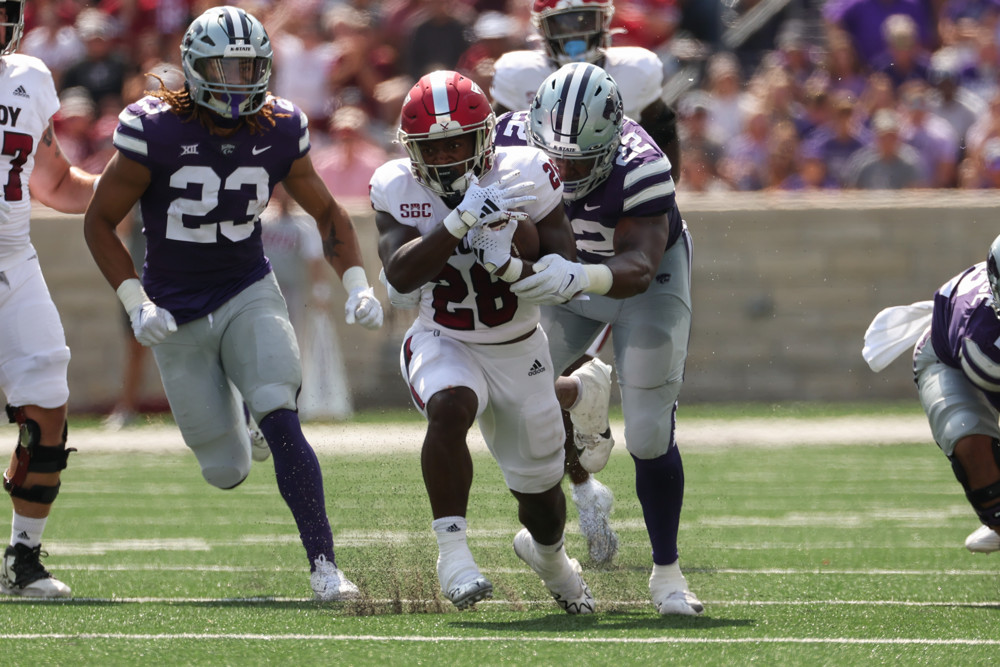By Bryce Rossler
We’re less than two weeks away from the first round of the NFL Draft, and it seems likely that the University of Iowa will have two players selected in the first round. It is not particularly unusual for a Power 5 school to produce multiple first-rounders in a single year – plenty of recent drafts have had multiple programs do so – but it is interesting that both the players in question, TJ Hockenson and Noah Fant, are tight ends.
As Dan Kadar of SB Nation noted, this would represent the first time that two tight ends from the same school were taken in the first round. And while their paths will almost certainly diverge on April 25, it’s impossible to mention one without the other being brought up.
However, the two weren’t so inseparable on the field. The Hawkeyes were in 12 personnel on ‘just’ 35% of their offensive snaps in 2018, and Hockenson played 342 snaps with Fant on the sideline, while the inverse was true just 63 times:
| Hockenson In | Hockenson Out | |
| Fant In | 421 | 63 |
| Fant Out | 342 | 0 |
On plays where Hockenson was in and Fant was not (HIFO), the Hawkeyes ran the ball 54% of the time and averaged -0.2 EPA/rush on designed runs.
As one might expect, they ran less frequently when Fant was in and Hockenson was not (FIHO). The run rate in Hockenson’s absence dropped to 40%, but, interestingly enough, rushes were more effective (-0.02 EPA/rush), albeit in a limited sample.
But this is not to say that the run game was better because Hockenson was out of the game. It should be noted that Iowa’s coaches were less willing to run behind Fant than Hockenson.
Iowa dialed up C- and D-gap runs to Fant’s side on just 22% of FIHO run plays, whereas they ran behind Hockenson on 35% of HIFO plays. And indeed, the average yards before contact on HIFO runs to Hockenson’s side was 1.6, compared to just 0.8 on FIHO runs to Fant’s side.
Unsurprisingly, the EPA-based success rate on run plays improved when both were in the game (41%) as opposed to when just Hockenson (35%) or Fant (33%) was in. The team was, perhaps surprisingly, less successful passing than running, as they posted a 36% success rate on dropbacks. This mark was better than when just Hockenson (28%) was on the field, but slightly worse than when just Fant (40%) was. Additionally, the EPA/dropback on these plays (-0.07) is much higher than the plays that featured just Hockenson (-0.67).
The last two data points make sense because Fant is generally billed as the better pure receiver, but, once again, it should be noted the sample size is smaller.
Their route trees were very similar, but the average target depth on all pass plays which featured only Fant (9 air yards/throw) was higher than the average target depth on those which featured only Hockenson (8.2).
However, if you look at plays where they were both in the game, Fant was targeted 53 times to Hockenson’s 34 (33 if you exclude interceptions), but Hockenson’s average depth of target (9.4) was higher than Fant’s (8.7). Hockenson’s EPA/target of 0.77 was also well above Fant’s 0.46 EPA/target
Furthermore, Hockenson’s EPA/target across all plays was 0.77/target and ranked third of 99 tight ends with 20+ targets in 2018. Fant (0.46) ranked 22nd behind several other draft-eligible tight ends; most notably, Trevon Wesco (4th), Irv Smith, Jr. (6th), Isaac Nauta (8thth), Jace Sternberger (14th), and Dawson Knox (15th).
The numbers indicate that Hockenson is the more well-rounded player, which aligns with media consensus. In our inaugural Football Rookie Handbook, we ranked Hockenson ahead of Fant, with the two comprising our top-graded tight ends. You can purchase the Football Rookie Handbook at this link.
Editor’s note: a previous version had miscalculated dropback success rates. We regret the error.



